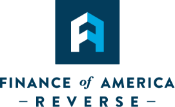Planning for long-term retirement spending is difficult, even for those who have had a couple of years of experience. Many people think that spending every year in retirement will be consistent. However, this is not typically the situation. Our interests and spending behaviors change over time.
Early in retirement, people usually are excited to travel and pursue hobbies that they’ve been putting off during their careers. Also, many people take advantage of traveling early in retirement while they still have their health. Later years in retirement typically reflect relaxation and focusing on family connections.
This spending trend translates to reduced spending later in retirement. However, increased healthcare costs are significant factors that retirees must take into account.
David Blanchett examines this retirement spending trend in his 2014 article, “Exploring the Retirement Consumption Puzzle.” After analyzing retirement spending patterns using household survey data, David found that retirees spend more at the start of retirement as they enjoy traveling, eating out, and other types of discretionary expenses. As they continue to age, retirees tend to slow down and spend less.
However, while discretionary expenses are declining, health costs tend to rise, and at some point later in retirement, these rising health costs offset reductions in other spending categories.
Looking at the constant spending approach, over a thirty-year retirement, and using a 50/50 portfolio, an initial distribution rate of 4.03% represents the historical worst-case sustainable spending rate from 1926 and later. If you took out 4.03% of your portfolio in the first year of your retirement and then adjusted that amount for inflation for the next thirty years, there were no historical periods where you would have run out of money throughout the study. On the other hand, an initial distribution rate of 4.05% would have failed at least once (admittedly, this doesn’t give us much of a guide as to what an optimal distribution rate for our retirements will be, but it does help us frame the downside risk.)
Using the spending pattern outlined by David Blanchett, the initial spending rate can increase to account for subsequent spending declines. In this case, the worst-case initial spending rate rose to 4.73%, representing an increase in the initial distribution rate of 17% – just by using a more appropriate retirement spending model. For a retiree basing their spending on these historical worst-case numbers, Mr. Blanchett’s spending pattern would allow retirement to begin with almost 15% less accumulated wealth than otherwise.
Retirement spending patterns are an essential component of deciding on a sustainable spending rate. Constant inflation-adjusted spending is a simplifying and conservative assumption. While financial experts use conservative assumptions, they suggest that using Mr. Blanchett’s spending pattern may provide an additional margin in a retirement budget. Choosing not to incorporate the retirement spending pattern into a plan may be a situation where you could be unduly penalizing yourself – especially if you plan a distribution rate close to the historical worst-case scenario. Every retirement will be different, but the data around Mr. Blanchett’s retirement spending pattern is clear. Most people reduce their spending in the middle of their retirement.
Regardless of how you model your retirement spending pattern, it would help if you considered incorporating home equity into your financial plan. Having an alternate source of cash-flow in retirement can make a huge difference. Having a cash-flow source that is unaffected by market conditions is proving helpful during the current economic conditions. The funds also help many who need additional cash-flow for unexpected expenses and medical bills.
If you consider taking out a reverse mortgage and would like to know more about qualifying under these updated borrower safety standards, please contact a Finance of America Reverse (FAR) LLC mortgage professional today. We are here to help educate and answer your questions.
These materials are not from HUD or FHA and were not approved by HUD or a government agency.
©2020 Finance of America Reverse LLC is licensed nationwide | Equal Housing Opportunity | NMLS ID # 2285 (www.nmls.consumeraccess.org) | 8023 East 63rd Place, Suite 700 | Tulsa, OK 74133 | AZ Mortgage Banker License #0921300 | Licensed by the Department of Business Oversight under the California Residential Mortgage Lending Act | Georgia Residential Mortgage Licensee #23647 | Kansas Licensed Mortgage Company | Massachusetts Lender/Broker License MC2285: Finance of America Reverse LLC | Licensed by the N.J. Department of Banking and Insurance | Licensed Mortgage Banker — NYS Banking Department where Finance of America Reverse is known as FAReverse LLC in lieu of true name Finance of America Reverse LLC | Rhode Island Licensed Lender | Not all products and options are available in all states | Terms subject to change without notice | For licensing information go to: www.nmlsconsumeraccess.org When the loan is due and payable, some or all of the equity in the property that is the subject of the reverse mortgage no longer belongs to borrowers, who may need to sell the home or otherwise repay the loan with interest from other proceeds. The lender may charge an origination fee, mortgage insurance premium, closing costs and servicing fees (added to the balance of the loan). The balance of the loan grows over time and the lender charges interest on the balance. Borrowers are responsible for paying property taxes, homeowner’s insurance, maintenance, and related taxes (which may be substantial). We do not establish an escrow account for disbursements of these payments. A set-aside account can be set up to pay taxes and insurance and may be required in some cases. Borrowers must occupy home as their primary residence and pay for ongoing maintenance; otherwise the loan becomes due and payable. The loan also becomes due and payable (and the property may be subject to a tax lien, other encumbrance, or foreclosure) when the last borrower, or eligible non-borrowing surviving spouse, dies, sells the home, permanently moves out, defaults on taxes, insurance payments, or maintenance, or does not otherwise comply with the loan terms. Interest is not tax-deductible until the loan is partially or fully repaid.
This article is intended for general informational and educational purposes only, and should not be construed as financial or tax advice. For more information about whether a reverse mortgage may be right for you, you should consult an independent financial advisor. For tax advice, please consult a tax professional.















I WANT TO KEEP UP TO DATE ON RETIREMENT TRENDS
Follow Us.